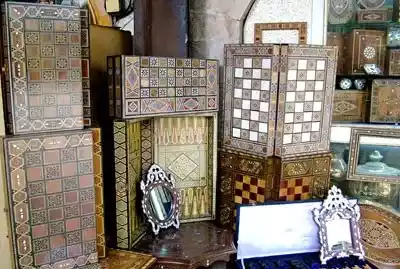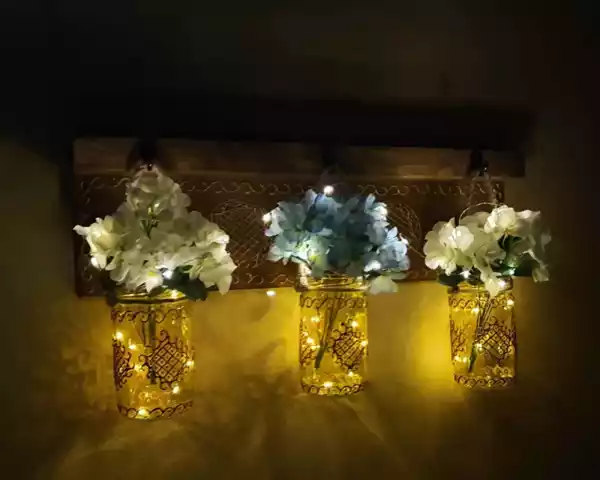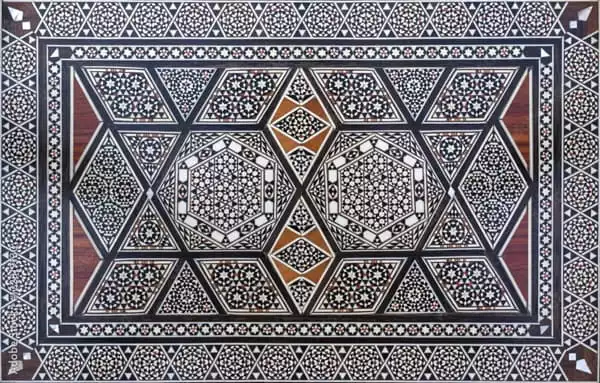Mosaic in the face of the economy & craft of mosaic
In an interview with a car sheikh in the “Medhat Pasha” market in the city of Damascus, “Abu Muhammad” said that the high prices and the exorbitant value of coincidences at present have caused the decline of work in “Mosaic.”
“Previously, tourists in Damascus used to buy mosaic pieces a lot.” With the reliance on the local market, “mosaic has become a luxury,” and many craftsmen moved their activities to other countries, including Turkey, “because there is a bigger market for it.”
The reasons that threaten the market and craft of mosaic

The coronavirus (Covid-19) pandemic has affected the profession due to the lack of exports, as the remaining artisans in Syria depend more on the foreign market than the inside.
Another reason that threatens the craft is the lack of manpower, as most of those who used to work in this profession

The rest of the craftsmen today are trying a lot to attract young people to teach them the craft, and there are many unemployed young people who refuse to learn the mosaic craft because of the low wages.
In general, the craft does not bring economic benefits to its professionals until after a long time, as some could not open their own stores until after ten years of training in the craft.
The craftsmen in Syria are demanding that the products of this craft be exempted from taxes and fees as a minimum until it rises again, and until the country returns to recovery and the tourism movement returns to normal.
There are many large companies that have taken advantage of this craft and invested it commercially, as they used to take production to furnish the palaces of princes in several Arab countries, in addition to companies that specialized in furnishing Levantine soap operas.
The craft of “mosaic” is linked to the memories of the Syrians and their cultural and heritage figures.
The Damascene Mosaic Art or the wood nut: One of the older trades still practiced today in the Syrian city of Damascus is the craft of inlaying mother-of-pearl onto wood. This craft has a history dating back more than 300 years. The mother-of-pearl is mixed with several types of wood, including walnut, rose, and beech, in the mosaic industry. Inlaying wood and transforming it into artistic drawings and geometric shapes like octagons, squares, hexagons, and triangles largely depend on the creativity of the craftsman. The wood is divided into small pieces that are then combined in the composition to create the desired shape from a variety of different types and colors of slices.

Watching a skilled mosaic artist at work while surrounded by hundreds of small, thin pieces of plastic and wood in a rainbow of colors is amazing. He used his deft hands to shape them into designs for boxes, mirror and clock frames, chessboards, and many sorts of furniture.
In a workshop in Damascus, the world’s oldest continuously inhabited city, they expertly made their lovely mosaic items. In this age-old city of five million people where Saint Paul once walked, inlaying wood is just one of many ancient crafts that are still being practiced as a living enterprise. The works of these artisans are displayed in shops throughout Souk al-Hamadiyyah, The Street Called Straight, and the confusing network of connected lanes. and, at times, hand-manufactured in front of the customer.
Like their fathers and grandfathers before them, artisans and their apprentices inlay furniture and other sorts of boxes. While nearby men and women work at various age-old trades, others next door pound silver into brass and copper trays.



